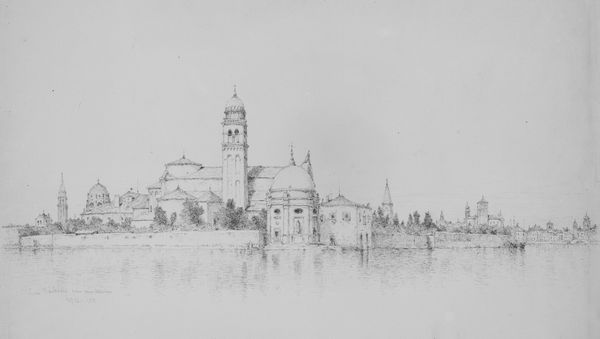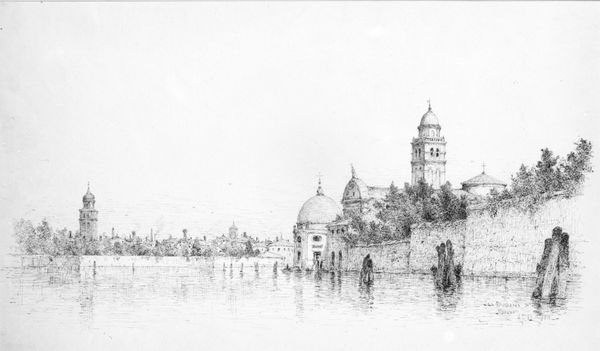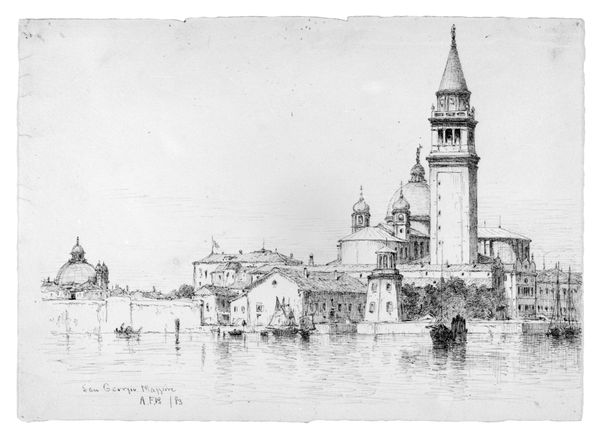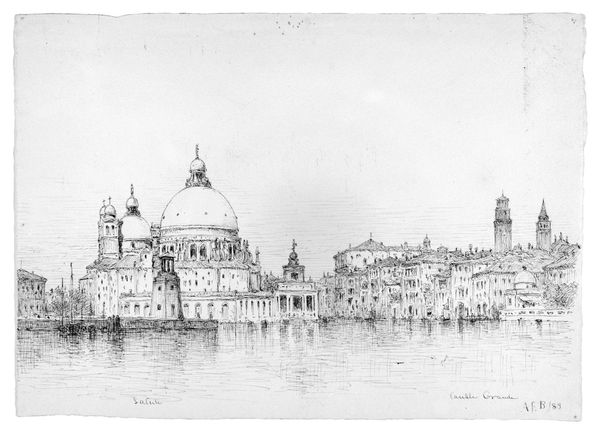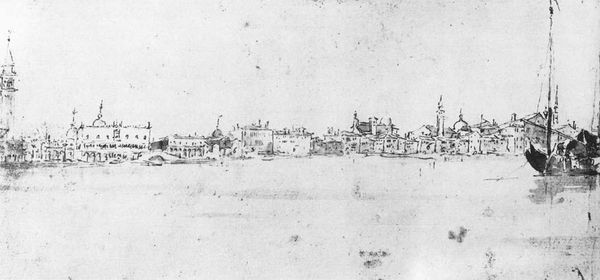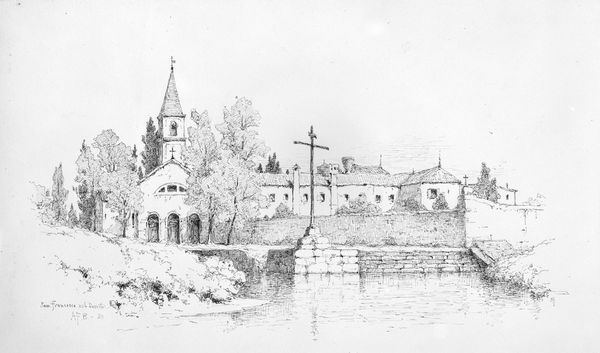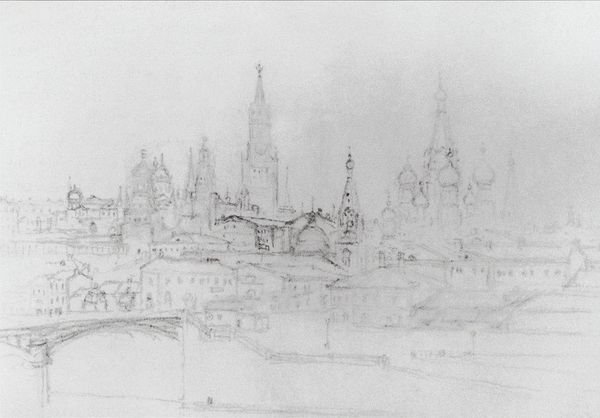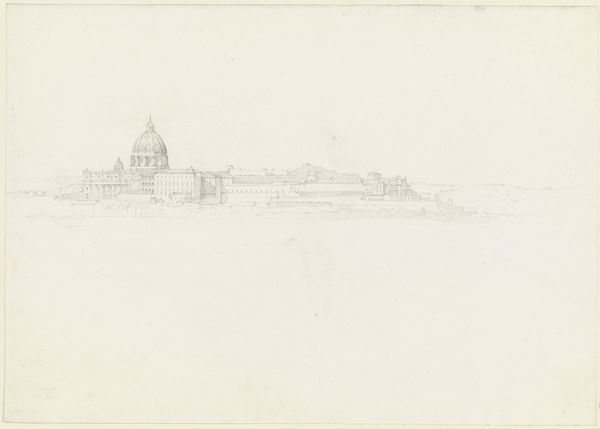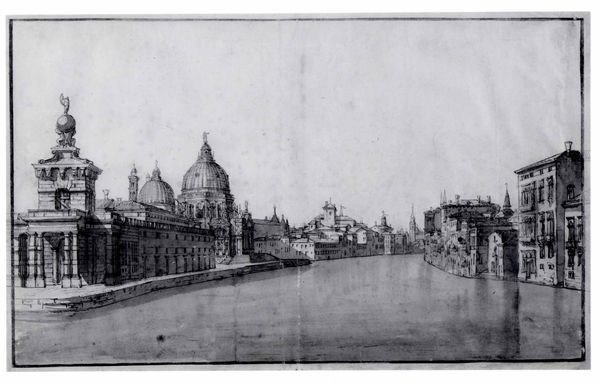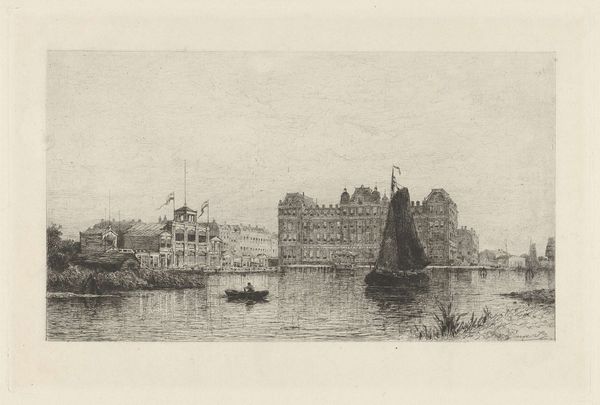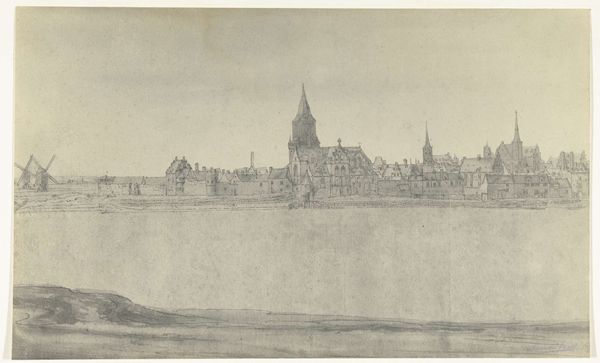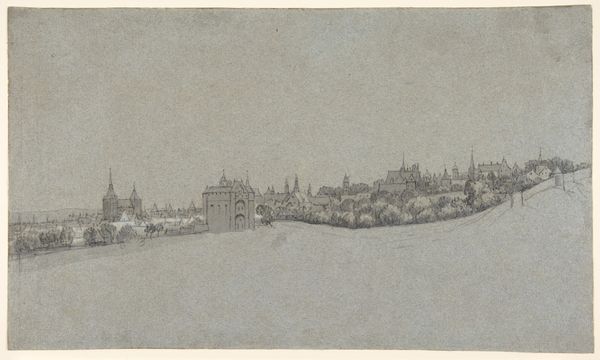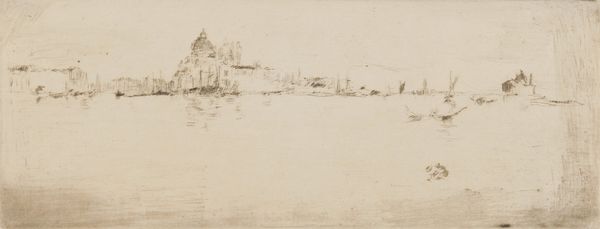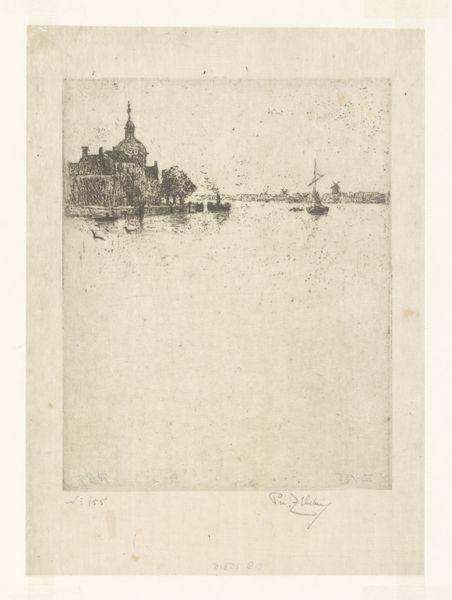
Two Sketches of Venice: San Nicoletto a Lido; Redentorre from Lido 1883
0:00
0:00
Dimensions: 8 5/8 x 12 1/8 in. (21.9 x 30.8 cm)
Copyright: Public Domain
Curator: Andrew Fisher Bunner completed these pen and ink drawings in 1883. The combined piece is titled "Two Sketches of Venice: San Nicoletto a Lido; Redentorre from Lido," and both drawings capture views from the Lido in Venice. Editor: They're striking! So spare, almost minimalist. The use of line is incredible; so much is communicated with such economy of means. It creates an interesting interplay of light and shadow across the water. Curator: Bunner, an American artist, was part of a wave of expatriates drawn to Venice in the late 19th century. Artists flocked there, attracted by its unique aesthetic, but also, quite crucially, the relatively cheap cost of living, turning Venice into a vibrant center for artistic production. The Venice they portrayed was more a melancholic relic of its former glory than a modern urban center. Editor: I notice how the texture created by the ink strokes mimics the rippling effect on the water’s surface. The reflections, however simplified, imply depth and atmospheric perspective. The San Nicoletto Church on top and the architectural massing of Redentorre at the bottom both provide great focal points. The semiotic function is great. Curator: It’s true; these architectural studies helped inform not only etching techniques but the public perception of Venice as well. This coincided with significant developments in printmaking and increased tourism. Works like these helped establish Venice as a place laden with history and architectural marvels, turning it into a stage for romantic escapism and contributing heavily to Venice’s popular imagination as being caught in time. Editor: What really stands out is the deliberate abstraction. The sparseness and limited range of tones demand active viewing; there's this call to visualize beyond what’s presented. A certain poetic essence of the locations. It really encapsulates mood over pure record keeping. Curator: Precisely, and in this way, Bunner successfully participates in shaping an enduring myth, as art of this kind really was used to encourage certain kinds of cultural tourism for generations of foreign visitors in Venice. It truly reflects the politics of place as it stands within a wider popular appeal. Editor: I've really appreciated this dive into Bunner’s dual study, as the combination of form and historical context gives greater depth into understanding the true legacy of this artist’s impact and meaning. Curator: Agreed; it is remarkable to reflect on how Bunner's delicate lines played a part in framing the socio-cultural value we continue to see associated with Venice.
Comments
No comments
Be the first to comment and join the conversation on the ultimate creative platform.
